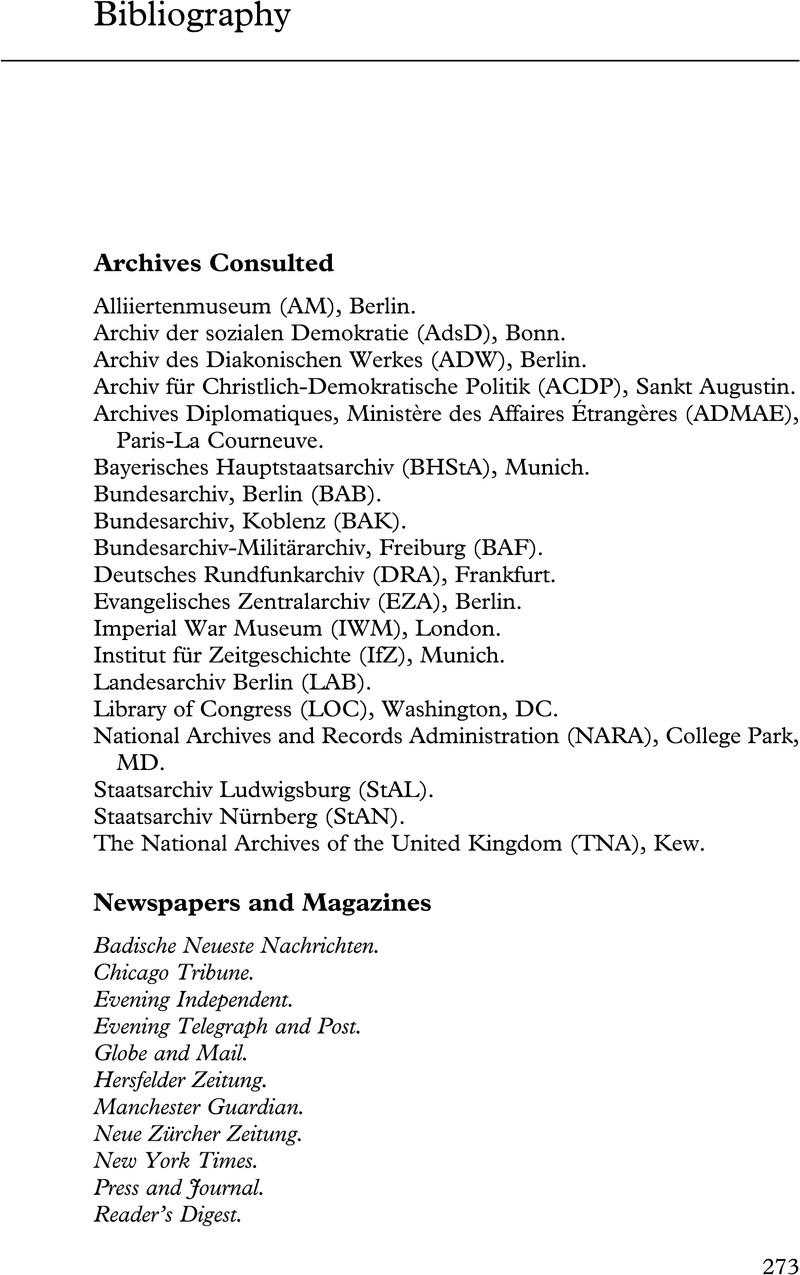 Everyday Denazification in Postwar Germany
Everyday Denazification in Postwar Germany Book contents
- Everyday Denazification in Postwar Germany
- Everyday Denazification in Postwar Germany
- Copyright page
- Contents
- Illustrations
- Tables
- Acknowledgments
- Abbreviations
- Maps
- Introduction
- 1 An Army of Academics
- 2 “A Miserable Paper Substitute for a Spontaneous Revolution”
- 3 “Land of the Fragebogen”
- 4 The “Little Man’s Nuremberg”
- 5 Writing Away Culpability
- Conclusion
- Appendix The Fragebogen Questions
- Bibliography
- Index
- References
Bibliography
Published online by Cambridge University Press: 23 March 2023
- Everyday Denazification in Postwar Germany
- Everyday Denazification in Postwar Germany
- Copyright page
- Contents
- Illustrations
- Tables
- Acknowledgments
- Abbreviations
- Maps
- Introduction
- 1 An Army of Academics
- 2 “A Miserable Paper Substitute for a Spontaneous Revolution”
- 3 “Land of the Fragebogen”
- 4 The “Little Man’s Nuremberg”
- 5 Writing Away Culpability
- Conclusion
- Appendix The Fragebogen Questions
- Bibliography
- Index
- References
Summary

- Type
- Chapter
- Information
- Everyday Denazification in Postwar GermanyThe Fragebogen and Political Screening during the Allied Occupation, pp. 273 - 294Publisher: Cambridge University PressPrint publication year: 2023
